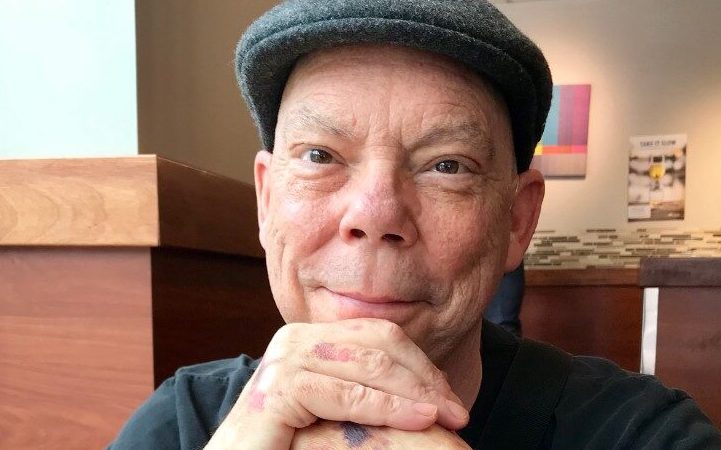
hypertension patient
In 2017, Carl Selzer was diagnosed with acute myelogenous leukemia, he quickly began chemotherapy treatment and started the recovery process. He did not expect, nearly three months later, that he would receive a second diagnosis that would affect his life forever: Pulmonary arterial hypertension.
Pulmonary arterial hypertension (PAH) is one form of a broader condition known as pulmonary hypertension (PH), which is a condition often characterized by high blood pressure in the blood vessels that carry blood to the lungs. Many people with PH in Canada spend roughly two to three years seeking an accurate diagnosis.
Innovative Medicines Canada (IMC) recently had the opportunity to speak with Carl about his experience living with PAH.
Read more about Carl’s journey below.
IMC: Can you share your journey of having been diagnosed with pulmonary arterial hypertension (PAH)?
Carl: My journey with PAH is quite a unique one. In November 2017, I received a diagnosis of acute myelogenous leukemia and started chemotherapy to handle it right away. On March 1 of 2018, I received a stem cell transplant and was sent home thinking that I would now start the long recovery process of getting over that intense chemotherapy treatment along with everything else that had been going on in my life during that time period. But things are never quite that simple.
The summer rolled around, and my health started to rapidly deteriorate to the point where I couldn’t even get out of bed without blacking out and having this severe tunnel vision. I went to go see my oncologist as part of follow up from my chemotherapy, and she took one look at me and knew something was terribly wrong. She sent me to the hospital and the doctors began to perform rapid testing to see what was going on. A thorough run of tests was performed and many things started to become quickly ruled out, however doctors were still unsure about what exactly I was facing.
I am very fortunate that I live in a major city where they actually have a PH clinic and team, and they were finally able to identify some of the symptoms I had been experiencing. In September 2018, I was officially diagnosed with pulmonary arterial hypertension (PAH). Within 24 hours of that diagnosis, they had me hooked up to an IV pump and introduced me to my new partner for the rest of my life.
IMC: What form of treatment was initiated after your PAH diagnosis and how did your condition start to change?
Carl: Right away, the doctors put me on the IV pump, and started administering an innovative drug along with oral medication twice a day. The effect was almost immediate. I went from not being able to get out of bed or being able to do anything essentially, to being able to walk around the hospital ward after the first week of being on the drugs. In my mind, that was a pretty miraculous turn-around. I was in the hospital with congestive heart failure due to my PAH and the week after was able to walk again. I am on the same medications today still.
IMC: How can we improve the aspect of increasing education around PAH? Why do more Canadians need to know about this chronic illness?
Carl: It can take up to two years for a pulmonary hypertension diagnosis due to the fact that many healthcare professionals are typically not as aware of this rare disease and it usually is the last thing that gets looked at when testing a patient for something. Some of the outward symptoms are also quite similar to other lung diseases, so it makes it increasingly more difficult to identify.
I actually attended a pulmonary respiratory exercise program and the organizers leading the program had zero experience with PH or its subset groups which include PAH – they did not even know what it was. A lot of delays in diagnoses around PH are from a lack of education around the rare illness. We are hopefully slowly starting to change that through initiatives like the Pulmonary Hypertension Association of Canada, by reaching out and getting more literature into people’s hands and really attempting to increase that general level of education among healthcare professionals and the average Canadian.
IMC: Is there any advice that you want to give?
Carl: I have two major suggestions. Number one is if you haven’t had much luck nailing down a diagnosis then it would in fact be a good idea to be tested for PH. My second suggestion is if you are in fact diagnosed with PH to not hesitate to connect with that community. Living with a chronic disease I have found it very helpful to share stories and experiences – when you first receive your diagnosis it is extremely devastating and life changing. For any of us on IV therapy we now are carrying this bag around with us for the rest of our lives.
When we are all together it is a chance for us to share our stories. Coming out of my cancer diagnosis then shortly being diagnosed with PAH I thought to myself “okay I’m done.” I used to be an avid bike rider and thought that PAH took that away from me until someone from the PH community pointed out “well maybe you should just get an e bike,” and that’s given me that part of my life back. Connecting with the community not only allows us to share some of our hardships and struggles, but also allows us to share hope and great, inspiring ideas with one another.
Read more patient stories: |



